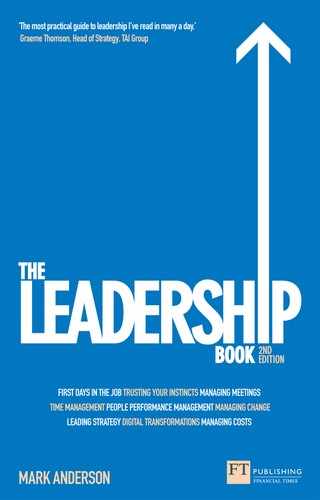Change is unavoidable. The effective leader makes it a positive driver not a hurdle to be overcome.
Frequency – constant.
Key participants – all colleagues.
Leadership rating ****
Objective
There was a time when change seemed exceptional and embracing it a choice to be made. No longer. It infects and affects all aspects of working, being driven especially by the transformative power of technology. In some ways our vocabulary is behind the pace of circumstance: ‘change’ implies the alternative of ‘permanence’ when the reality is that not changing is not an option.
This is an exquisitely tough challenge for any leader, to
- set out a vision which has an enduring purpose
- but demand adherence to that vision through seemingly relentless change.
The objective for the leader must then be to achieve this balance: to drive continuity and change, a sense of belonging to something whose identity is constant and yet also changing.
As you lead your organisation you develop the change imperative – that change is the necessary source of survival.
Context
Change is difficult and challenging. Change requires vision and resilience. It requires the ability to see through short-term hurdles and setbacks for the sake of a greater longer-term goal. It demands clarity and relentlessness of purpose.
If change is the new norm, then managing change demands acceptance of some fundamental principles:
- that as a leader you must embrace and champion change;
- that change is described as a way of business life not a specific time-limited project;
- that change is positive and not negative;
- that change is a process of improvement not recrimination.
The key challenge then for any leader is to embed change in the daily way of working as part of normal process.
Challenge
Talk of change naturally provokes uncertainty, even fear. Colleagues worry that changes to any aspect of the business with which they are familiar threaten their roles and the comfort zone that is part of being within a business-social community. The response to change may therefore include a range of behaviours:
- outright opposition, articulated transparently;
- outright opposition not expressed;
- half-hearted support lacking real motivation;
- outright opposition masquerading as support.
The effective leader must be prepared for any or all of the above responses and be able to identify them. A key part of dealing with challenges to change is being able to articulate effectively the reasons for change and to demonstrate that change is allied to a clear sense of purpose and not being implemented for its own sake. The risk is that the challenge to change will always be more substantive – and potentially the more successful – where change is described negatively (‘this is what we are no longer doing’) rather than positively (‘we are changing from x to y to meet the following opportunity …’).
Success
As change is no longer a project but a business way of life, then being successful in change cannot simply be about the achievement of specific change projects (though those will always be on the organisational agenda). Success will instead be primarily about attitude and behaviour and will be represented by:
- change within strategy – articulate change regularly within the strategic agenda;
- change within plans – make change a normal part of all regular planning;
- change within communication – give a positive purpose to change in your regular communications;
- change the norm – ensure you are always striving to do things better and more efficiently.
Achieving this position will require some specific behaviours from the effective leader:
- consistency of messaging – that change is normal;
- regularity of messaging – that change is regular;
- market restlessness – always looking for ways in which customer demands are changing;
- challenging behaviour – always being seen to ask why the business does things in a certain way;
- risk-taking – being seen to take calculated risks;
- speed – being seen to move fast as change needs rapidity of response.
Pitfalls
There are two main risks for the leader in driving the change imperative:
- not seeing change as a norm – if the leader suggests through words or actions that change is a project rather than a norm, then the risk is that colleagues will see change as constrained and time-limited rather than embedded across the business;
- not articulating change relentlessly – any let-up in the advocacy of change risks change being regarded as a fad and one of those here-today-gone-tomorrow management obsessions.
So change is at the heart of effective leadership. It is a cornerstone of leadership vision, strategy, demeanour and tone. Not articulating it regularly and relentlessly as a business norm risks undermining the foundation of a leader’s performance.
Leaders’ checklist
- Remember that change is a norm not a project.
- Embed change in all aspects of your business, from your strategy to reviewing performance.
- Regard yourself as Chief Change Agent and talk about change relentlessly.
- Remember to be on the lookout for all types of resistance to change, especially the type which is hidden.
- Meet resistance with determination – don’t be deflected by short-term hurdles.
- Demonstrate the efficacy of change through calculated risk-taking.
